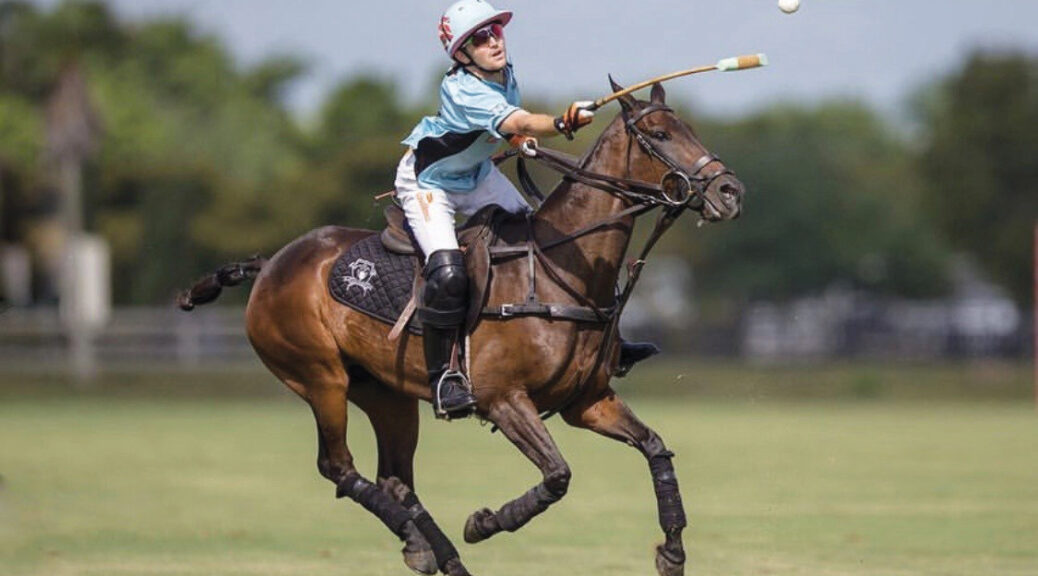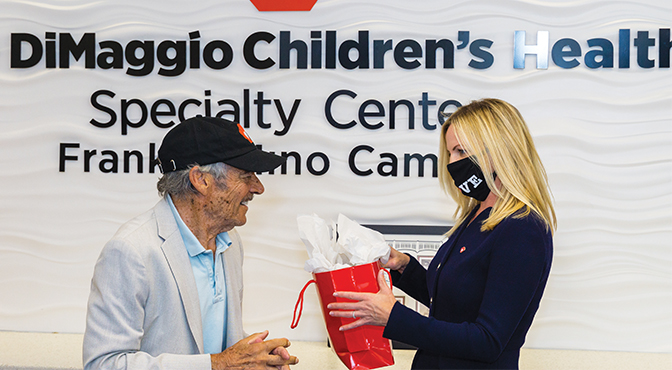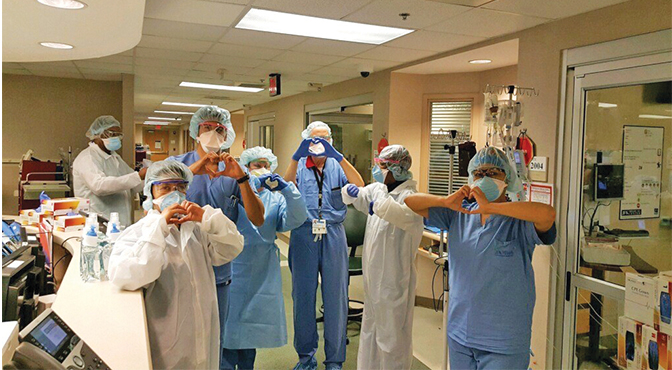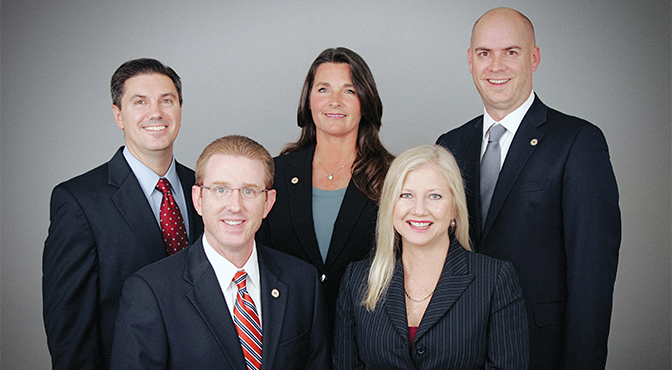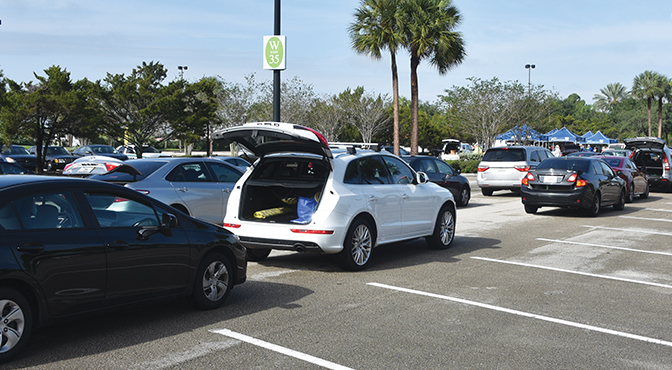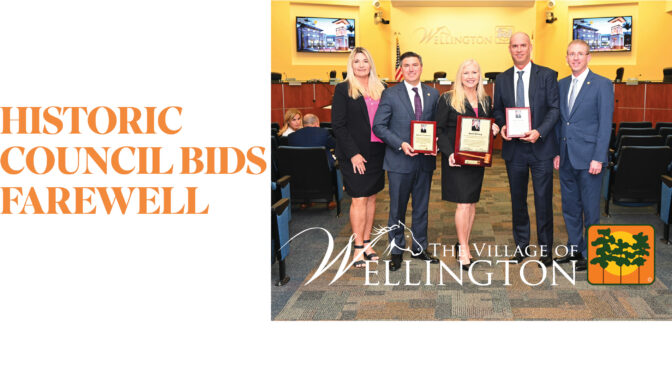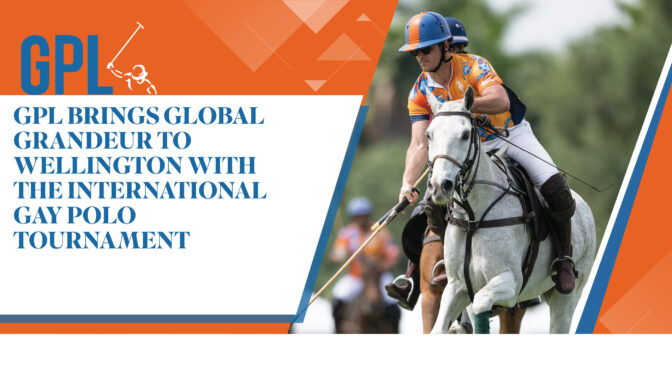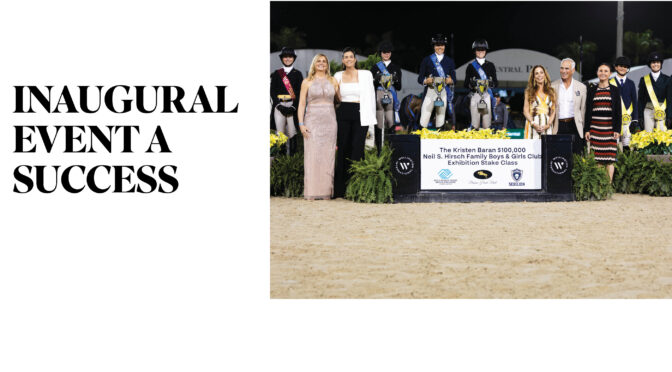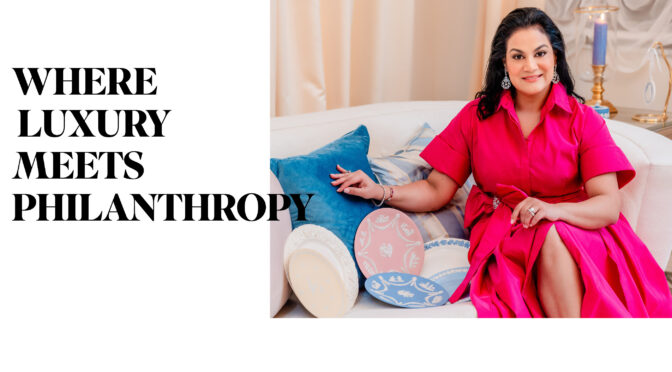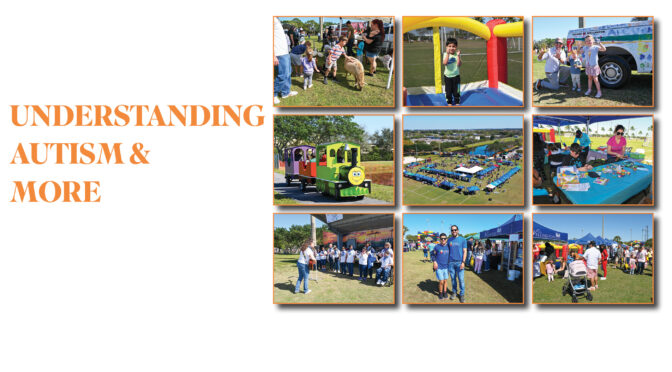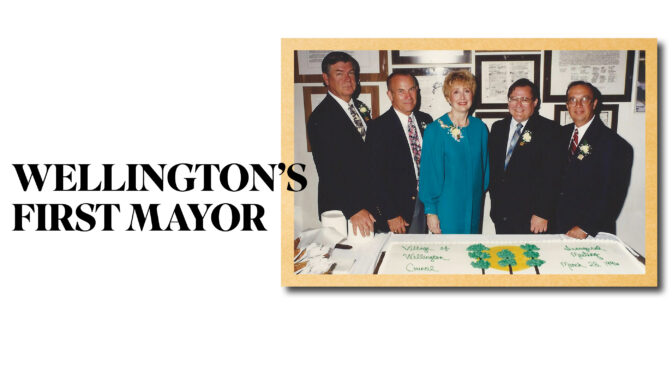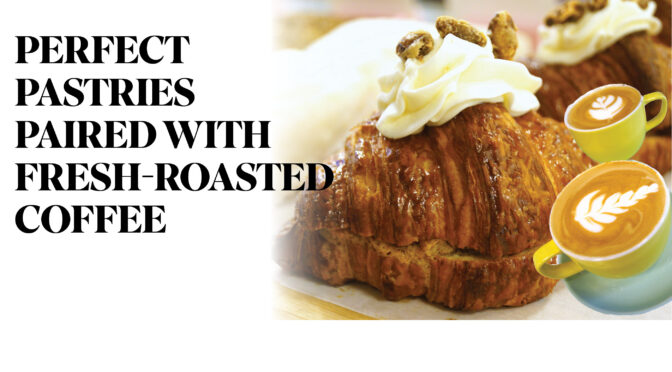Historic Council Bids Farewell
Transformative Wellington Village Council Remained Unchanged For Eight Years
By Mike May
This month marks the end of an era in Wellington government. For the first time in village history, the Wellington Village Council remained unchanged for eight solid years. They were blockbuster years with major changes, led by a panel of leaders who were unusually cohesive — and almost always got along well, even amid a few significant disagreements.
Meanwhile, the Village of Wellington has garnered some special recognition in recent years, such as an All-American City finalist, Money Magazine’s Best 100 Places to Live in the USA, listed as one of the Top 10 Safest Cities in Florida in 2022, and the Eighth Best Place to Live for Families, according to Fortune.
Many of those accolades came due to policies put in place by the five individuals who made up the Wellington Village Council over the past eight years — Mayor Anne Gerwig, Michael Drahos, John McGovern, Michael Napoleone and Tanya Siskind.
The outgoing council is a quintet of dedicated, diverse, driven and dynamic individuals who are diehard advocates of Wellington with a goal to serve the best interests of the residents and the village, even if there is always some disagreement on how best to accomplish that monumental task.
They have worked closely together, effectively and efficiently, to guide and oversee Wellington’s growth and expansion, and sometimes redevelopment. Not only have they served and worked well together, they have also been able to cooperate, communicate and compromise in an effort to serve the best interests of the village.
“It has been a hardworking group of people,” said McGovern, and those sentiments were shared by his fellow council members.
Nothing — whether hurricanes or a pandemic — has impeded the ability of this five-person delegation to meet on a regular basis to successfully conduct the business of the Village of Wellington. For the last eight years, whenever the clock struck 7 p.m. on a meeting night, Gerwig, Siskind, Drahos, Napoleone and McGovern were almost always sitting in their seats on the dais.
“We worked hard to work together,” Napoleone said.
“We never rubber-stamped any issues,” Drahos added.
“We have made many decisions with the best interests of the Village of Wellington in mind,” McGovern explained. “I call it community unanimity.”
This council came together after a tumultuous time in Wellington history, following a council that was sharply divided on many significant issues, but more importantly, did not get along.
“We restored a sense of order to the council,” said Gerwig, who has lived in Wellington for more than 30 years, where she and her husband run a business and raised their three children. “Before us, the council had become dysfunctional.”
This council, which includes the first two council members (McGovern and Drahos) who actually grew up in Wellington, was determined to strike a different tone.
“We’ve listened to the residents of the community and made decisions which were in the best interests of Wellington,” said Siskind, who considers herself a public servant, not a politician.
“We brought an unprecedented era of calm, collaboration, cohesion and continued success to the council,” McGovern added.
According to Drahos, “We brought credibility and stability to the council. We showed how to properly behave as elected officials.”
Napoleone referred to it as “bringing civility back to council meetings.”
If you look at this council’s list of achievements, it’s impressive and worth reviewing. It includes, but is not limited to, the construction of the new Wellington Town Center, which included the expansion of the Wellington Amphitheater and Scott’s Place playground, as well as the creation of the new Lakefront Promenade. Behind the scenes, they oversaw a $50 million modernization of Wellington’s water and wastewater utilities. They expanded the Wellington Tennis Center and have approved the construction of a new Wellington Aquatics Complex be built at Village Park, replacing an aging and outdated facility.
The council also approved and funded the acquisition of 45 acres of land for the expansion of the Wellington Environmental Preserve at the Marjory Stoneman Douglas Everglades Habitat located off Flying Cow Road. This adds significantly to what was already a huge passive park and natural area. They also approved, funded and constructed the new Greenview Shores Park at Wellington High School’s campus, which features the largest non-collegiate artificial turf field east of the Mississippi River and is being used by dozens of local sports teams.
After decades of discussion, the council passed Wellington’s first golf cart ordinance.
“It was a safety issue,” Drahos said. “It was not an easy issue. It was very complex and difficult. But it’s critical to our way of life in Wellington.”
Possibly the most high-profile decision by the council was its recent approval of the Wellington Lifestyle Partners project, which while controversial for allowing the removal of some land from Wellington’s signature Equestrian Preserve Area, it will bring two significant recreational improvements that will benefit all residents.
Wellington will gain control of 55 acres just north of Forest Hill Blvd., which will become a new passive park on former golf course land that has been repeatedly suggested for development.
More importantly, the approval paves the way for the construction of an expanded equestrian showgrounds to be completed by 2028, allowing Wellington to continue to shine as the Winter Equestrian Capital of the World.
“That was a super hard, intense issue,” Gerwig recalled.
The council has also looked into the future of the village-owned K-Park property and settled longtime litigation issues affiliated with the land around the Mall at Wellington Green.
“Making those decisions was essential for the next decade of Wellington,” McGovern noted.
Supporting public education has been another priority of the council, which has increased the village’s Keely Spinelli grant award amounts given annually to each public school in Wellington, which has helped to keep Wellington’s schools A-rated.
The council also made decisions that have positively impacted the lifestyles of Wellington residents, such as the approval of new events like weekly outdoor concerts, the inclusion of food trucks, an expanded green market, and special events like the Wellington Classic Brew Fest and Bacon & Bourbon Fest.
There were significant policy initiatives, too. “We designed, passed and funded the first paid parental leave policy in Palm Beach County, supporting our employees that are new mothers and fathers,” McGovern noted.
All these improvements and upgrades to the quality of life in Wellington have been achieved without raising the millage rate.
“Our ability to maintain our way of life without raising the tax rate was not easy,” Drahos said.
Gerwig pointed out that while the council made decisions that provided direct and tangible benefits to Wellington residents, these “big picture” decisions also positively impacted residents of nearby communities.
“Our amenities are also enjoyed by those living in the surrounding communities, such as Royal Palm Beach, Greenacres and Boynton Beach,” Gerwig said. “We don’t live in a bubble.”
While this diverse council often had different points of view, they all voted based on what they felt were in the best interests of Wellington. After each vote, they would transition to the next topic. For Drahos, Napoleone and McGovern, that behavior is second nature, since they are all attorneys.
“We are all trained to be prepared, and we never carry with us the baggage of disagreement,” Drahos said.
“We are trained to take input, assess the issue, make a decision, cast a vote and then move on,” Napoleone agreed.
“We may have agreed or disagreed, but we were never disagreeable,” McGovern added. “We know how to properly behave as elected officials.”
Siskind also has a tendency to think like an attorney. “I am married to an attorney,” she noted.
While Gerwig may have been Wellington’s elected mayor, her goal was to be a team player.
“I was just one of five votes,” Gerwig said. “I was always a critical thinker. You should always care about every issue equally, whether it’s parks, schools, education or business.”
Despite the success of the eight years, changes are imminent. When the council next meets on Tuesday, April 9, Napoleone will take over the gavel from Gerwig after being elected mayor. Two new faces will join dais, but who they are will not be known until after an April 2 runoff election.
The swearing in ceremony on April 9 will be a Wellington watershed moment.
“Because of term limits and staggered terms, this will likely never happen again,” McGovern said of having an unchanged council for eight years.
Moving forward, Siskind and McGovern will be part of a new council team, as Napoleone learns the ins and outs of being mayor. While Drahos is stepping back from public life, Gerwig is currently running for a seat in the Florida House of Representatives.
Drahos said he will always cherish his time serving on the council.
“I will be looking back at these last eight years for the rest of my life,” he said.
Gerwig, who was Wellington’s sixth mayor and served a total of 14 years on the council, takes a pragmatic perspective.
“Everything will be perceived in hindsight,” she said. “My focus has always been on the residents of Wellington. Only time will tell.”
Napoleone knows that having the chance to work alongside Gerwig, Siskind, Drahos and McGovern was a special experience.
“It was such a privilege to spend the last eight years together,” the new mayor said. “We had a great run.”
Siskind said that serving on the council is an important assignment and not an easy task.
“We always set the bar high,” said Siskind, who works as a Realtor. “We all brought professionalism to the council. We agreed to disagree, and we always respected other people’s perspectives.”
As one of the two council holdovers, McGovern pledges to continue serving Wellington for today’s residents and future generations.
“We as a village cannot be stagnant, so we must modernize and advance while remaining true to our core principles of being the premier place to raise a family with great schools, great parks programs, dedicated programs for seniors and continuing to be the Winter Equestrian Capital of the World,” McGovern concluded.
